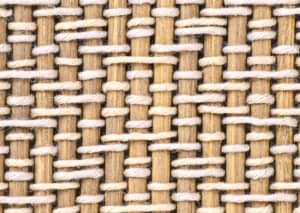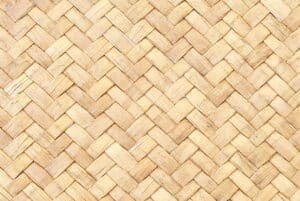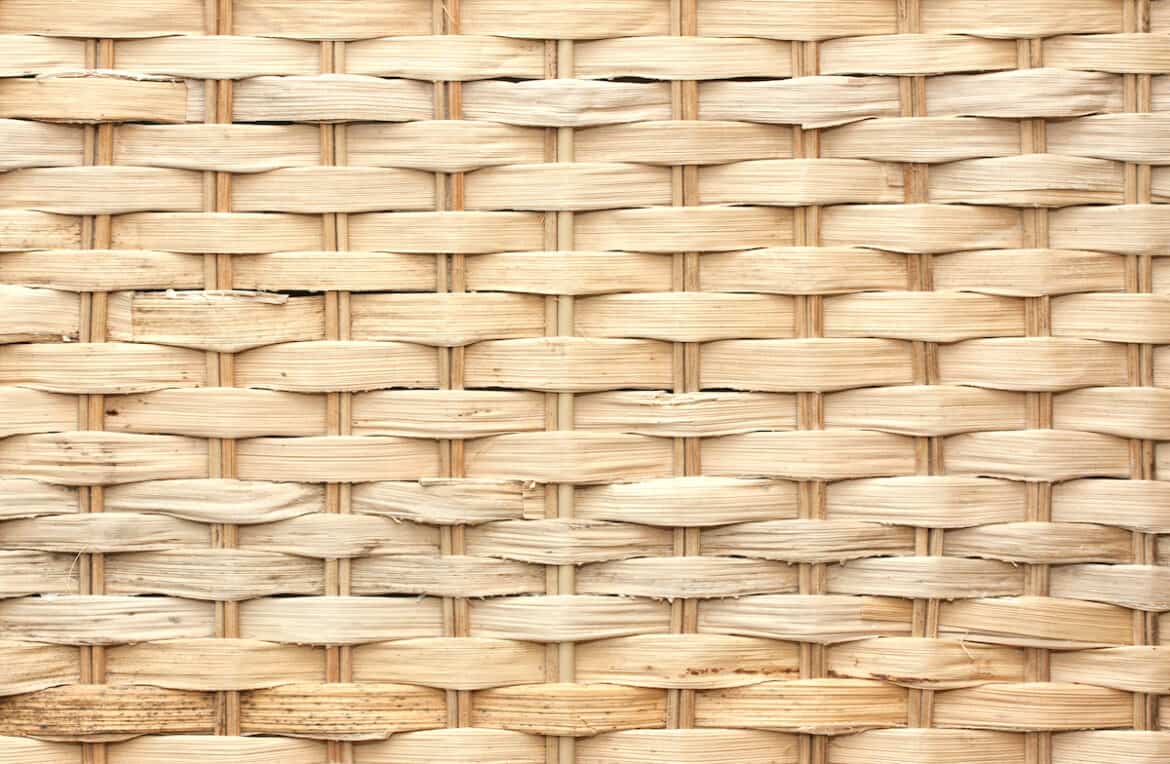When shopping for outdoor furniture, you want to make sure you’re getting something that’s sturdy and built to last. Outdoor furniture will have to endure heat, cold, rain, sun, snow, wind, and more.
Many outdoor furniture pieces only last for a few years if not properly looked after. They can start to rust, mildew, or simply fall apart from the harsh elements.
A common outdoor furniture trend is to make pieces from bamboo and rattan. Like wood, they are strong organic materials that can withstand the elements. Although their furniture pieces can sometimes look the same, bamboo and rattan are very different.
So, what’s the difference in bamboo vs rattan? Bamboo is a hollow grass plant that grows straight up. The material is sturdy and cannot be bent. Rattan is a plant in the palm tree family that grows as a solid core vine. Although the material is also hard, it can be bent and manipulated with steam to create curves.
Both of these materials are great choices for outdoor furniture. When finished with outdoor rated varnish or seal, they can stand up to the different types of weather sure to come.
Your big decision in choosing which to buy will mainly come down to the look of the furniture. Let’s dive in so you can understand the detailed differences, and similarities, of bamboo and rattan.
What Is Bamboo?

Most people are familiar with bamboo in plant form. It grows straight up in a hollow shoot and is incredibly strong and durable.
There are over 1,000 known species of bamboo, so there’s a wide range when it comes to the type of bamboo available. Some species grow smaller shoots of bamboo, while others grow to be quite wide in diameter.
Bamboo is a grass plant, though it looks like a large tree when fully grown. It’s grown in several continents, including Asia, Latin America, and Africa. The largest source of bamboo for worldwide distribution is China.
Bamboo is so strong that it’s said to be harder than mahogany wood. Its incredible strength and density contribute to its inability to bend. No matter what process you try, bamboo cannot be bent. It will always stay as a straight, hollow cylinder.
For knitting and crocheting, this bamboo blend yarn is my absolute favorite.
For more information, check out this brief documentary on bamboo from the INBAR LAC channel on YouTube below!
What Is Rattan?

Rattan is an entirely different plant from bamboo. It’s part of the palm tree family, and grows as a vine with a solid core, rather than a hollow shoot.
Although rattan is said to be one of the strongest organic materials in the world, it can also be bent. By using steam, you can bend and curve rattan into whatever shape you want, then leave it to dry. Once fully dried, it will stay that shape forever.
Rattan is often used in two separate pieces: the vine core and the bark, or skin. The skin of rattan is called cane, and both cane and rattan are used together to construct rattan furniture.
If you look at a piece of wicker furniture made with rattan, you will likely notice that there aren’t any screws or nails holding the structure together. Instead, the rattan vines are held together by wrapping cane around the joints.
Rattan is grown in tropical rain forests in areas such as Asia, Africa, and Australia. The largest source of rattan currently is Indonesia.
For easy home crafts, it doesn’t get any better than this super fun raffia yarn on Amazon.
If you would like to see how rattan is processed and shaped, take a look at the video below from Drovers Inside & Out on YouTube.
Bamboo And Rattan Similarities
Before we dive into the major differences between bamboo and rattan, let’s review their similarities. They’re often mistaken for each other because of the similarities rather than their differences.
Bamboo and rattan have a very similar look. They’re both round shapes, and since they both take stain and paint well, can be finished to look exactly the same.
They’re both incredibly hard and strong materials, so they are well-rated to stand up against difficult conditions or heavy weights.
Both of these grasses grow incredibly quickly – bamboo is said to be able to grow up to 1.5” per hour! Because they’re natural resources that grow very quickly, they’re extremely sustainable.
For those looking to help the planet by using sustainable and renewable resources, then bamboo and rattan furniture are great choices for you.
They’re also both used to create very similar furniture pieces. Both bamboo and rattan are commonly used for baskets, outdoor furniture, plant holders, shades, lamps, and more.
Both bamboo and rattan are generally wrapped at their joints for construction rather than held together by screws or nails. Bamboo requires this due to its hollow nature, but rattan also has this feature because the cane of rattan is so strong.
Bamboo And Rattan Differences
Now that we’ve covered their similarities, it’s time to dive into their differences.
First, bamboo and rattan are entirely different plants. Bamboo is part of the grass plant family, while rattan is part of the palm tree family. Bamboo grows as a straight, hollow shoot, while rattan grows as a solid core vine that can bend and curve.
After harvesting, rattan can be further manipulated and curved using steam to create any shape desired. This is how furniture items such as peacock chairs are crafted.
Bamboo, on the other hand, cannot be bent. It will always be a straight shoot no matter what.
This is a key difference that can help you determine whether your furniture item is bamboo or rattan. If there are curves to the wood, it’s rattan. If every piece is straight, it could be bamboo or rattan.
As we mentioned, rattan can be separated into two pieces: the inner core and the skin, called cane. The core of rattan can then be cut into strips that can be used for thin weaving.
Bamboo doesn’t have a core, and only consists of the hollow cylindrical shoot. Its wood is the exterior wall of the plant, while the inside is completely empty.
Bamboo also has distinctive rings, or notches, along the surface of the shoot. Rattan is much smoother in texture without these rings around the outside.
Summary Of Bamboo Vs Rattan
Below are summarized sections of how bamboo and rattan are similar and how they are different.
Bamboo and rattan
- Hard, sturdy
- Used for outdoor furniture, baskets, lamps, shades, etc.
- Incredibly fast-growing, a sustainable resource
- Take stains/paints well
- Constructed with wrapping at joints instead of nails or screws
Bamboo
- Hollow shoots that grow straight
- Part of the grass family
- Cannot be bent
- Distinctive rings along the shoot
- Primarily grown in China
Rattan
- Vines grown with a solid core
- Part of the palm tree family
- Can be bent/manipulated with steam
- Smooth outside surface
- Can be separated into core and cane
- Primarily grown in Indonesia
Common Uses For Bamboo And Rattan
Bamboo and rattan are both commonly used for outdoor furniture. Although they have many other uses, this is their primary product.
If you’re familiar with wicker furniture, then you’re likely familiar with rattan. Due to its flexible nature, rattan is often used to create wicker baskets or other wicker furniture items.
Although some people think that wicker is another type of material, wicker actually refers to the process that’s used to weave natural or synthetic materials to create the final products such as baskets or furniture pieces.
Wicker is a common use for rattan furniture because it allows for breathability to the material, helping the product stand up against wind and keeping the person sitting in it feeling a nice breeze through the material.
Bamboo can also be used in wicker, though not the same. Bamboo can be woven as straight, flat pieces to create flat items such as a wicker table top, but it cannot be bent or curved.
Bamboo is often bound together in its full shoot form to create a rounded, ridged look, held together by cane. These types of furniture items are often seen on outdoor patios or decks, or even in screened-in, covered porches.
It’s often accessorized by adding patterned cushions that bring some color and life to the piece.
Proper Care Of Bamboo And Rattan Furniture
If you’re in the market for new outdoor furniture items, both bamboo and rattan are excellent materials. The important thing is that you look after them properly.
You can wash, sand, and add a coat of wax to your bamboo or rattan furniture to keep it looking fresh and properly sealed against the elements.
Over time you may notice sun damage to your bamboo, but this is normal. A quick afternoon of washing, sanding, and waxing your bamboo furniture will bring it back to life.
It’s also important to remember that rattan and bamboo furniture are not waterproof. If you purchase them at the store, they’ve often been treated with an outdoor varnish or seal to protect them from the elements, but that won’t last forever.
To extend the life of your rattan and bamboo furniture, you can bring them inside during particularly bad weather, or you can refinish them as they wear down.
Instead of waxing, you can consider applying a new coat of stain and outdoor varnish to freshen it up and keep it looking good as new.
Up Next: Best Wood For Adirondack Chairs
